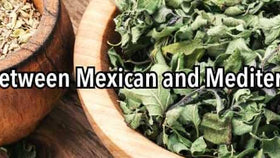How To Tell The Difference Between Real and Fake Saffron
In a recent post, we explored several imposter ingredients that are either falsely marketed as saffron or that are similar in name and appearance, thus often mistakenly purchased by consumers with little knowledge of how to purchase real saffron. When looking to buy real, high-quality saffron, there is a unique set of attributes that make it stand out; and this article will explore those attributes so our readers feel prepared to make a purchasing decision they feel comfortable with.
How to Know if Saffron is Good Quality and the Real Thing
If quality is important to you (and it should be), it is crucial that you do your research so you are prepared to pick out pure saffron. You’ll need to know the distinct aroma it possesses, the point of the color spectrum at which its range of hue typically resides, the flavor properties it should possess, and what imposter ingredients you should be on the lookout for and avoid.
So what are those imposter ingredients that are being mistaken as saffron?
We covered several of the ingredients that are being wrongly marketed as or simply mistaken as saffron in a recent post. The first instance is an intentional and unethical—ingredients that are either being sold as saffron when they are something else entirely or a product that is only partially made up of saffron, with the primary contents being died fibers, threads, or alternative herbs.
The second instance is not necessarily unethical, but rather a case of misguided consumerism. When the purchaser lacks the knowledge of what true saffron looks, tastes, and smells like, they may unintentionally purchase products that possess a similar likeness in appearance and name. The two main ingredients that fall into this category are Georgian saffron and Safflower petals. Neither are related to saffron, nor will the impart the same flavor and aroma into food.
What is the appearance of real saffron?
While saffron transfer tones of yellow and orange into food and fabric it is added to, the saffron itself tends to be deep shades of red, with small amounts of yellow and orange on some of the threads. Each thread is comprised of the stigma and stamen of a crocus flower, Crocus sativus. As such, it takes on the appearance of the female reproductive organ of most flowers—long and slender with a thicker and slightly widened tip.
What is saffron’s aroma?
Some of the saffron imposters may have similar aromatic qualities of saffron, but the trained nose can easily tell them apart. Like real saffron, Georgian saffron possesses floral and earthy notes, but it lacks the depth of sweetness that is so recognizable at the first whiff of pure, high-quality saffron. Safflower petals, on the other hand, smell exceedingly sweet, but rather than notes of honey, they are more earthy, with qualities reminiscent of a more earthy maple syrup. Saffron also smells fresh, like cut grass or spring leaf buds, whereas the imposter ingredients tend to possess sharpness akin to pepper or are somewhat overpowering like leather and tobacco.
What does real saffron taste like?
Real, high-quality saffron is truly spectacular in flavor, with a profile that is almost indescribable. Like the aroma, the flavor is often described as having notes of honey, honeysuckle, or fresh-cut grass. It is extremely pungent, earthy, and seemingly musky. That said, there is no combination of adjectives that truly describes the flavor of saffron. You simply need to experience it yourself.
Find pure, high-quality saffron in our online shop.
Is it ever ok to substitute other ingredients for saffron?
While the flavor of saffron is certainly irreplaceable, there are times when it may be acceptable to substitute with another, less expensive ingredient. We only recommend doing so, if you are using saffron as a dye rather as a flavoring agent. So if you are hoping to turn a simple white rice or pasta yellow, by all means, use another ingredient. If your hope is to incorporate that unmistakable saffron flavor, though, there really is no replacement that will suffice.
Want to learn more about saffron? Check out these posts:
Everything You Need to Know About Saffron







Slofoodgroup
Author